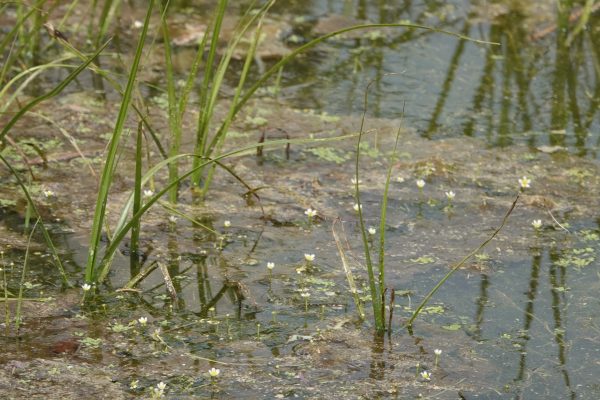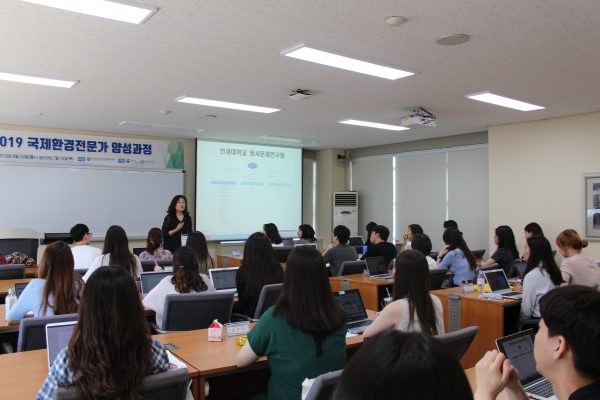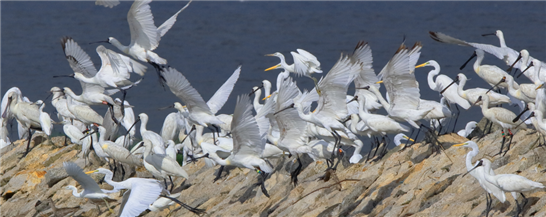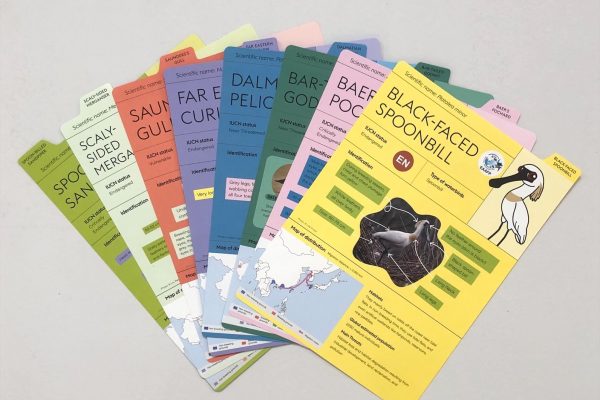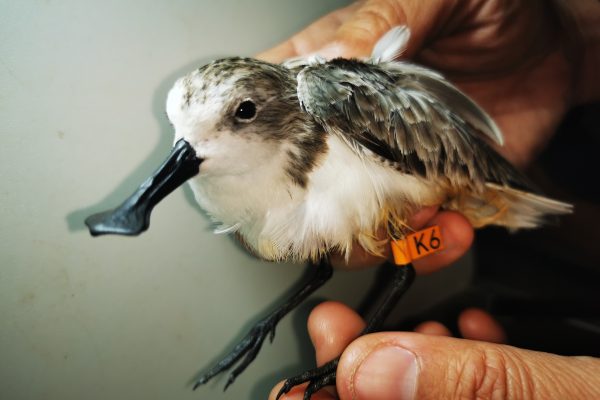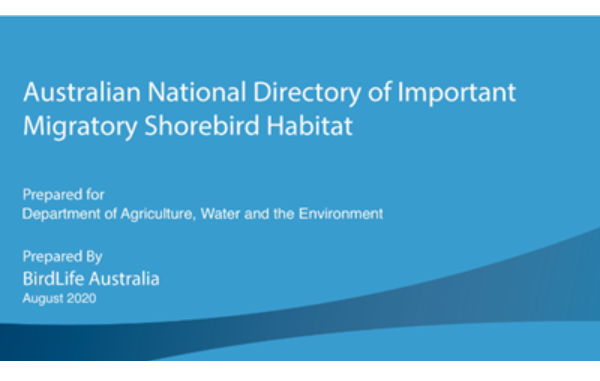-
Loach Releasing Event in Maehwamareum Paddy Fields at Ganghwa Island, Ro Korea
On 8 May, the EAAFP Foundation participated in the Loach Releasing Event at Maehwamareum Paddy Fields in Ganghwa Island. The event was organized by the National Trust of Korea…
Continue reading -
MOU Extension Signing Ceremony between EAAFP Secretariat and Korea Environment Corporation (K-eco)
On 2nd May 2021, EAAFP Secretariat and K-eco extended their MoU to…
Continue reading -
World Migratory Bird Day 2021 invites us to reconnect with Nature by appreciating “bird songs and flight”
The World Migratory Bird Day (WMBD), a global annual campaign is held on every second Saturday of May and October, to raise awareness of migratory birds and calls for…
Continue reading -
National Monitoring of Black-faced Spoonbills and study on their habitats in the Republic of Korea, 2020
Study about breeding status, population, national distribution, and habitat use by satellite tracking…
Continue reading -
EAAF Shorebird Tracking Group 1st Webinar
The EAAF Shorebird Tracking Group, established in 2021 following the 1st East Asian-Australasian Flyway Shorebird Science Meeting in 2020, held the first webinar on 13th…
Continue reading -
Promoting the wise use of artificial wetland – fishponds in Hong Kong
Conserving the natural habitats is the priority for conservation in the field, but at sites where habitats had been modified and degraded, we should promote the restoration and wise…
Continue reading -
Some updates on colour legflags used in Southern China
Marking migratory waterbirds with metal rings, wing tags, neck bands, leg rings and flags, nasal discs, telemetry equipment like GPS devices, is an important way of studying their migration….
Continue reading -
Australia published National Directory of Important Migratory Shorebird Habitat
A National Directory of Important Migratory Shorebird Habitat ('Directory') was newly published by BirdLife Australia and supported by the Australian Government. The Directory identifies, and guides investment into the protection and restoration of, important migratory shorebird habitat around Australia. It builds community awareness and Indigenous knowledge, helps achieve the goals of the Australian Government’s Wildlife Conservation Plan for Migratory Shorebirds and contributes to the implementation of Australia’s international obligations to the conservation and management of migratory shorebirds. It is based on thousands of field surveys by volunteers and experts, millions of bird sightings and uses rigorous methodology to identify key sites, thus providing useful and objective guidance. Habitat is key: Populations of many species of migratory shorebirds have undergone substantial decline over recent and extended periods of time. As an example, numbers of Far Eastern Curlew (Numenius madagascariensis) have declined by more than 80% over the course of by now four decades. Halting this decline and reversing the current trend is without alternative if threatened species are to avoid extinction and continue to contribute as an integral component of Australia nation’s biodiversity to the functioning of Australia’s ecosystems. Actions and processes threatening migratory shorebird habitat have to be effectively recognized and mitigated. In order to achieve this, decision-makers and stakeholders around Australia need to be able to easily access information on the importance of sites for migratory shorebirds. The directory provides this crucial link which was not previously been available. The Directory also provides a starting point for a more comprehensive assessment of the current state of the habitat listed, a prioritization of sites according to current or future threats experienced and more targeted conservation action. This directly addresses and supports some of the priority actions in the Australian Government’s Wildlife Conservation Plan for Migratory Shorebirds across the main objectives: protection of important habitat, anthropogenic threat minimization or elimination and knowledge gap identification. A number of high priority projects are already in the process of being implemented, the Directory makes those more effective and targeted. The Directory is an important step towards effective migratory shorebird habitat protection around Australia. Revision of conservation and management plans for many sites may be necessary to reflect their importance. Specific site action plans detailing conservation measures to be taken for migratory shorebirds at a single site can be developed as a follow-up action. The directory thus also represents a key resource underpinning further conservation measures under Australia’s Conservation Action Plan for Migratory Shorebirds and other frameworks. The Australian Government, which provided gratefully acknowledged funding for this scientific project delivered by BirdLife Australia, has approved of the Directory after consultations with its Committees and all Australian States and Territories. The document has been officially launched on 21 April 2021. It is available for download in *.pdf format in its latest version: National Directory of Important Migratory Shorebird Habitat Download the complete Directory (one file or, due to file size, chapters separately) from the download folder. It is advised to always read the Introduction and Discussion alongside the chapter you need. Overview of chapters: Introduction and Methods Chapter 1 - External Territories Chapter 2 - New South Wales and Australian Capital Territory Chapter 3 - Northern Territory Chapter 4 - Queensland Chapter 5 - South Australia Chapter 6 - Tasmania Chapter 7 - Victoria Chapter 8 - Western Australia Chapter 9 - Species accounts (listing of sites by species, not by site) Discussion and Appendices Due to the large size of the document (1287 pages printed), there are no printed copies are available – please arrange for own printing and binding if desired. If you have feedback on the Directory process or the Directory itself, or you have additional data to contribute to a potential future revision, please write to directory.feedback@birdlife.org.au If you have other questions regarding the Directory, please contact shorebirds@birdlife.org.au For data extractions from BirdLife Australia’s shorebird data holdings, see the Data Extractions section. Repost from BirdLife Australia news article: https://birdlife.org.au/projects/shorebirds/national-directory-ms-habitat (Released on: 21st April, 2021) Know more about Flyway Network Sites in Australia: www.eaaflyway.net/australia/
Continue reading -
Kick-starting the first EAAFP Conservation Status Review
The 1% waterbird population estimate threshold is a key criterion for identifying sites of international importance, including designating Ramsar Sites and EAAFP Flyway Network Sites. Thus, this information of waterbird population estimates needs to be regularly updated. To ensure researchers, government agencies, conservationists and other stakeholders can get access to up-to-date information of waterbird population estimate, EAAFP MoP 10 adopted Decision 12 “Development of a Conservation Status Review of Migratory Waterbird Populations for the EAAFP” in 2018. To proceed with the development of the Conservation Status Review (CSR), the EAAFP Secretariat has contracted Wetlands International (EAAFP Partner) to coordinate the preparation of the first CSR in 2021-2022. This will be implemented in close consultation with the Technical Sub-Committee, Science Unit of the Secretariat, Partners, Working Groups, Task Forces and other experts. To inform all Partners, Working Groups/ Task Forces and other stakeholders about this important project and to seek comments, advice and support, a webinar on the EAAFP Conservation Status Review was organized on 8th April 2021, co-hosted by EAAFP Secretariat (Incheon and Beijing offices) and Wetlands International. A total of 99 participants, from thirteen of sixteen Working Groups and Task Forces, and 10 Partners participated. In Session 1, EAAFP Chair, Mr. Robb Kaler emphasised the importance of Decision 12 adopted at MOP10 and invited all Partners, Working Groups, Task Forces and experts to participate in this project. Ms. Tomoko Ichikawa, Japan Focal Point of EAAFP, also stressed the importance of up-to-date 1% thresholds for EAAFP Network Sites and Ramsar site designation, as well as the importance of national monitoring programmes to provide baseline information to enhance conservation measures. After that, Dr. Taej Mundkur, Senior Technical Officer of Wetlands International introduced the background of the first CSR (CSR 1), the proposed timeline of the project that will cover over 250 biogeographic populations of about 210 species and preparation of final results that would be presented at MoP11. He also established a baseline of seeking feedback during the consultation, recognizing knowledge gaps for some waterbird groups and suggested ways to address these. Session 2 was moderated by Mr. Doug Watkins, Chief Executive of the EAAFP Secretariat. This session focused on engagement and contributing to the Conservation Status Review during 2021. Dr. Mundkur continued to introduce the scope and consultation process including a review on population size estimates, population trends, boundary maps, and provided details of the timeline of the deliverables. Followed by Mr. Tom Langendoen, Technical Officer of Wetlands International, who demonstrated the use of the CSR Consultation Portal for experts to provide population-level feedback during the review process as well as feedback on waterbird population boundary maps. After the introductory sessions, the floor was open for Q & A. Participants actively engaged in the discussion. Many important issues were raised by the participants on reviewing process, refining scope of population to be reviewed, supports to fill in gaps and mobilize experts to contribute, and application of the review to conservation. The webinar ended with closing remarks by Mr. Robb Kaler. Watch the webinar: PPT Presentation by Dr. Taej Mundkur: Session 1: Click here to view Session 1 PPT Presentation Session 2: Click here to view Session 2 PPT Presentation Demonstration videos by Mr. Tom Langendoen on: 1. Commenting WPE https://www.eaaflyway.net/wp-content/uploads/2021/04/1.-WPEcommenting.mp4 2. Reviewing Boundary map https://www.eaaflyway.net/wp-content/uploads/2021/04/2.-Boundaries.mp4 For further information and inquiries, please contact: Dr. Taej Mundkur (Wetlands International) Email: Taej.Mundkur@wetlands.org Dr Qing Zheng (EAAFP Science Unit) Email: science@eaaflyway.net
Continue reading

